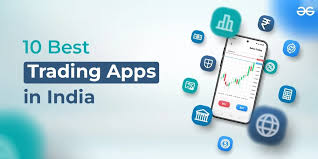Driving Strategic Value through Advanced Procurement Platforms
When it comes to strategic procurement, the Source-to-Contract (S2C) procedure is gaining recognition as the most preferable business approach in the modern convoluted business landscape. This includes the process of finding supply chains, discussion and completion of contracts, and handling of contracts and other supply partnership agreements that have been completed. Procurement software is available to assist organizations in achieving their objectives and offers a range of advantages that augment process efficiency, transparency, and strategic value. This article delves into the benefits, focusing on how these platforms are transforming the procurement environment today.
- Simplified RFQ and RFP Procedures:
To set the parameters for the work to be done, this process frequently includes an RFP or RFQ, as well as the usage of standardized templates, automated workflows, and shared communication channels. This shortens the time it takes to make purchases and improves the quality and efficiency of supplier selection. For the greatest outcomes, real-time tracking and bid review are effective. To ensure compliance with an organization’s procurement policies, procurement compliance operates with standardization. It helps the customer and the supplier by making the process more organized and leaner.
- Increased effectiveness in sourcing:
Procurement platforms can combine many actions into a complete process or system when it comes to sourcing. Faster sourcing cycles and the ability for procurement teams to respond proactively to market developments and company demands are the results of this. Organizations can lower the cost of doing regular operations by automating repetitive procedures, freeing up staff to work on strategic initiatives. Increased efficiency leads to cost savings and the realization of optimum productivity. Being more responsive and agile to enable speedy decision-making is one of the process’s most significant benefits.
- Assistance with contract management:
These platforms streamline contract administration with easily customizable templates, automated approval and storage procedures, and consolidated document storage. This aids in uniformity, eliminates the possibility of errors, and manages legal and regulatory compliance in addition to the evaluation of contract and agreement performance. This implies that contract data may be conveniently retrieved through centralized storage, guaranteeing the most effective possible contract entry and fulfilment procedure. Convertible contracts ensure that all agreements adhere to organizational guidelines and may be modified to suit an individual’s needs. Stakeholders attest that by enhancing contract value delivery and skilfully managing related risks, ACTS strikes a healthy balance.
- Better evaluation and identification of suppliers:
These platforms make supplier discovery and analysis easier by offering more advanced searching and analysis tools, hence expanding the capability of traditional supplier databases. Additionally, they provide access to enormous databases that include information on the company’s past performance and financial standing, utilizing artificial intelligence to aid in decision-making. Using information such as prices, supplier quality, and dependability, sophisticated models rank the vendors. Comprehensive assessments are used to manage challenges, and the outcome is enhanced procurement quality. Procurement managers can make more informed decisions for the company with the use of supplier data.
- Improved ability to negotiate:
Procurement systems facilitate data-backed discussions by providing checklists, historical data, and market trends. Collaboration tools for thorough online negotiation and documentation preparation are also included. These tools aid in making sure that the terms and circumstances that have been agreed upon are suitable or advantageous to the company. The company has an advantage in upcoming negotiations and compliance thanks to the documentation and analytics. The overall strategic and tactical approach to bargaining is becoming more prevalent.
- Strategic sourcing combined with creative thinking
Introducing platforms as strategic sourcing tools for the right kind of business facilitates supplier segmentation, market analysis, and strategy planning. Through these platforms, businesses can identify new ideas, sourcing consolidations, and lost opportunities. By forming strategic supplier partnerships, companies can build stronger, longer-lasting relationships with key suppliers and accomplish objectives like better quality, more innovation, and enhanced market positioning.
- Compliance with laws and Risk management:
Procurement systems furnish users with superior tools to assess and handle hazards related to contracts and suppliers. To ensure supply chain and control compliance, this involves using risk management frameworks, adhering to various compliance standards, and utilizing performance monitoring tools. Proactive risk management reduces risk to the lowest possible level that could affect its operations. Legal compliance monitoring ensures correct requirements compliance and filters compliance concerns. This goes a long way in ensuring that the supply chain of things is consistent and not interrupted frequently.
- Improved cooperation and interaction:
Additionally, it facilitates successful collaboration between procurement teams, suppliers, and other interested stakeholders by making it simple to use the integrated communication capabilities inside these platforms. Collaboration areas, discussion boards, and live chat are examples of tools that enhance team cohesiveness, complaint resolution speed, and procurement procedures. It has been noted that improved communication between people or organizations results in more positive relationship outcomes. Making decisions is accelerated via real-time messaging. When planning their day or week, everyone may work together thanks to shared resources.
- Making decisions based on statistical data:
Utilizing data makes procurement decisions more effective and efficient. Tools with integrated reporting and analytics functionalities can offer detailed segmentation of spending data, analysis of suppliers’ performance, or market analysis. This analytical system helps the decision-making process create the appropriate procurement outcomes. Consumer analysis relevant to the market offers an understanding of strategy formulation. It provides a clear picture of the money spent and highlights areas where the money could have been used otherwise.
Because of the growth of procurement platforms, the sourcing and procurement environment has evolved, and creating a strategic sourcing system has become vital to an organization’s success. The services provided by these platforms include improved supplier and sourcing management, effective contract management systems, and the ability to make defensible judgments based on data gathered from suppliers. As companies continue to conduct business in international supply chains, procurement platforms will become increasingly important to achieve optimal performance and generate novel value. This is a calculated approach rather than just adjusting to new technology tools or a trend that should be avoided.





